Uncategorized
The Artistry of Maharashtra Handicrafts: A Journey Through Culture and Craft
Maharashtra, a vibrant state in western India, is renowned for its rich cultural heritage and diverse handicrafts. The artisans of Maharashtra have preserved and perfected their crafts over centuries, creating unique products that reflect the region’s traditions and values. From textiles to metalwork, Maharashtra’s handicrafts are not only beautiful but also deeply rooted in the lives of the communities that produce them. This essay explores the various forms of handicrafts found in Maharashtra, their significance, and their impact on local economies.
The Rich Variety of Handicrafts
Maharashtra is home to an impressive array of handicrafts, each representing the skills and creativity of its artisans. Some of the most notable crafts include:
- Warli Paintings
Originating from the tribal communities of the northern Konkan region, Warli paintings are one of the most iconic forms of folk art in Maharashtra. Characterized by their earthy tones and simplistic geometric shapes, these paintings depict daily life, nature, and spiritual beliefs. Using a mixture of rice paste and water, artists create intricate designs on mud walls, celebrating the harmony between humans and nature. Warli art not only beautifies homes but also serves as a medium to convey cultural narratives.
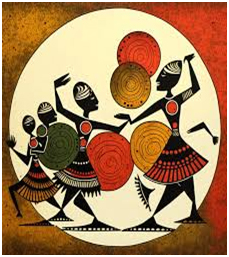
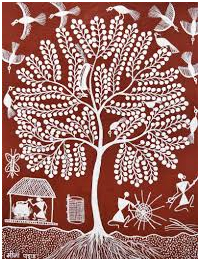
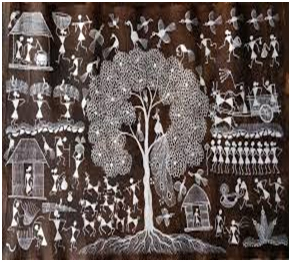
- Paithani Sarees
Paithani sarees are a symbol of elegance and craftsmanship, traditionally woven in the town of Paithan. Made from silk, these sarees are adorned with intricate zari work and vibrant colors. The craftsmanship involved is meticulous, often taking months to complete a single saree. Paithani sarees hold a special place in Maharashtrian weddings and festivals, embodying the grace and artistry of the region’s textile heritage.
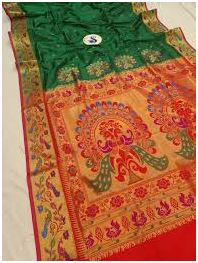
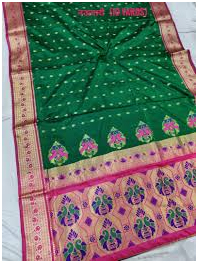
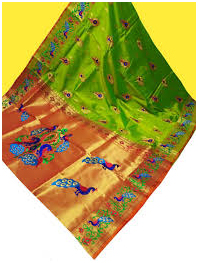
- Kolhapuri Chappals
Known for their durability and comfort, Kolhapuri chappals are handcrafted leather sandals that have gained popularity across India and beyond. Artisans use traditional techniques to create these footwear items, often embellishing them with intricate designs. Each pair of chappals is unique, reflecting the skill and creativity of its maker. Kolhapuri chappals not only provide comfort but also showcase the rich leather craft of Maharashtra.
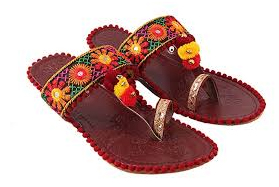
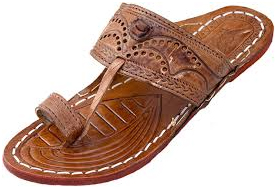
- Bidriware
Bidriware, a distinctive metal handicraft, originated in Bidar but has flourished in Maharashtra. This craft involves inlaying silver onto a black alloy made from zinc and copper. The resulting pieces, which can range from decorative items to jewelry, are celebrated for their intricate designs and craftsmanship. Bidriware is a testament to the region’s historical trade connections and continues to be a sought-after collectible.
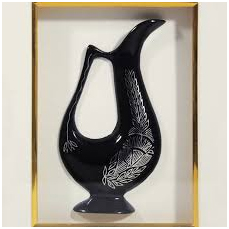
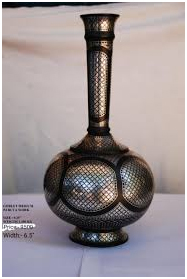
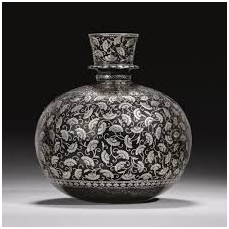
Cultural Significance
The handicrafts of Maharashtra are deeply intertwined with the cultural identity of its people. Each craft tells a story, reflecting the traditions, beliefs, and lifestyles of the communities that create them. For instance, Warli paintings serve not only as decoration but also as a means of preserving tribal folklore. Similarly, the significance of Paithani sarees in weddings highlights their role in cultural rituals and celebrations.
Supporting these crafts is essential for preserving cultural heritage. As modernity encroaches upon traditional ways of life, promoting and valuing these handicrafts ensures that future generations will have the opportunity to appreciate and participate in these artistic expressions.
Economic Impact
Maharashtra’s handicrafts contribute significantly to the local economy. Artisans often rely on their crafts as their primary source of income, providing livelihoods for families and communities. In rural areas, these handicrafts empower women, offering them a means to support themselves and their families.
The growing demand for authentic handicrafts, both in domestic and international markets, has spurred initiatives to promote these products. Government programs and NGOs are working to provide training, resources, and platforms for artisans to showcase their work. This support not only helps artisans improve their skills but also connects them to larger markets, ensuring the sustainability of their crafts.
Conclusion
Maharashtra’s handicrafts are a beautiful expression of its rich cultural heritage and artistic tradition. From the captivating Warli paintings to the elegant Paithani sarees, each craft carries with it the essence of the region’s history and identity. As we navigate a rapidly changing world, it is crucial to support these artisans and their crafts, ensuring that the artistry of Maharashtra continues to thrive. By celebrating and investing in these handicrafts, we honour the skill and creativity of the artisans while preserving the vibrant cultural tapestry of Maharashtra for future generations.
